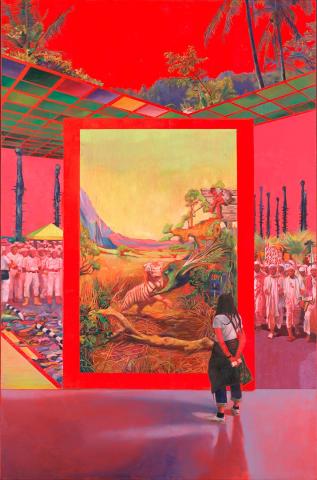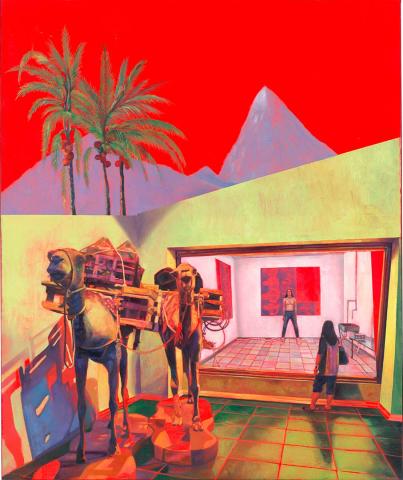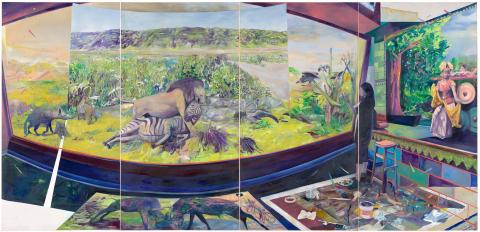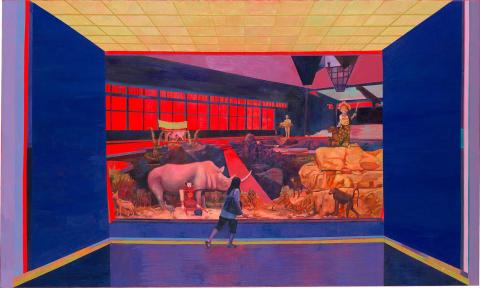Zico Albaiquni
APT9
Born 1987 Bandung, Indonesia
Lives and works in Bandung, Indonesia
Zico Albaiquni’s vibrant figurative and landscape paintings play with aspects of Indonesian art history and notions of painterly representation. In particular, he deploys references to various Indonesian traditions such as Mooi Indie (‘beautiful Indies’) painting — a genre of painting capturing romanticised scenes of the Indonesian landscape and its people under Dutch colonial rule. Albaiquni’s unusual and intriguing colour palette developed from the tonal formulas of this early tradition. He also references the links between art, advertising, and the commodification of landscape to investigate contemporary environmental issues in Indonesia. His large-scale works challenge conventional perspectives and formats, often playing with trompe l’oeil illusions and disrupting the rectangular borders of the canvas. In recent paintings, Albaiquni has begun to question the context and operation of painting by incorporating his own studio into his composition, or installing and circulating paintings in public spaces.

Zico Albaiquni / Indonesia b.1987 / Negotiation of Understanding 2016–17 / Oil, synthetic polymer paint and giclée on canvas / 270 x 580 cm / © Zico Albaiquni / Image courtesy: The artist and Yavuz Gallery, Singapore
Zico Albaiquni’s paintings include a wide range of references and juxtapositions, examining Indonesian painting traditions and broader art histories, with a particular interest in how the Indonesian landscape has been treated and commodified throughout history. Underpinning these investigations is the Indonesian concept of lukisan (roughly translating as ‘painting’) and its ethnic ties to ritual, exchange and the creation of sacred objects.
Albaiquni’s distinct palette arises from pigment combinations drawn from the colonial painting genre of Mooi Indie (‘beautiful Indies’), while different picture planes and points of perspective intersect, and combinations of irregular-shaped canvases create multilayered compositions. He borrows imagery from disparate sources: from the acclaimed nineteenth century Indonesian painter Raden Saleh, to museum dioramas, tourist art, signature works by contemporary Indonesian artists and installation views from international exhibitions such as the Venice Biennale and the first Asia Pacific Triennial in 1993. The results blend elements of art history, religious figures and gallery settings, as well as incorporating the public art viewer and the private space of the artists’ studio into the image in order to probe the relationships between artist, artwork, the viewer and art history.




